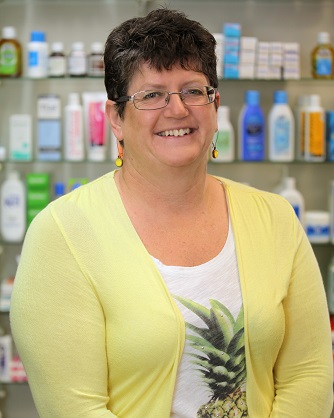
PhD student Patti Napier's research suggests the workplace is ready for accuracy-checking technicians.
“This is a big change for pharmacists, with a significant shift in roles,” – Patti Napier.
Community pharmacist-turned-PhD student Patti Napier's research is behind one of the newest initiatives in pharmacy – accuracy-checking technicians.
A plan to allow qualified pharmacy technicians to carry out final accuracy checks on dispensed items has been recommended for a national rollout, based on the findings of a pilot project which was part of Mrs Napier's research.
“An initial survey told us the workplace is ready for this role,” Mrs Napier told many of her colleagues when presenting the findings of her PhD thesis at a school seminar recently.
Little needs to change for the initiative to be introduced and ultimately, the new roles will allow pharmacists more time on patient-focused activities.
A pharmacist will still have to conduct clinical checks to ensure the prescription is safe and appropriate.The technician will be checking the dispensing is accurate and that the final product matches the prescription; that is, the correct medicine is in the correct bottle with the correct label.
Together with the school's associate professor Rhiannon Braund, Mrs Napier was on the steering committee for the pilot project, collecting data for the evaluation on behalf of the Ministry of Health.The Pharmaceutical Society of New Zealand ran the training programme for technicians, based on the UK model, with the evaluation looking at the changes in the amount of time staff spent on the different activities.
The evaluation found pharmacists in pharmacies with checking technicians were able to increase the amount of time spent on activities associated with patients.
Before the introduction of checking technicians, pharmacists involved in the evaluation spent on average 29 per cent of their time on patient-focused activities.This increased to more than 58 per cent when working alongside the checking technicians.
“This is a big change for pharmacists, with a significant shift in roles,” Mrs Napier says.
“Some felt this would be better suited to hospital settings, but I believe it works well everywhere. I think it just demonstrated hospitals were ready to go because they were more structured.”
Pharmaceutical Society chief executive Richard Townley says the research shows the introduction of accuracy checking technicians will enable pharmacists to have more customer contact time and deliver more extended services for patients such as warfarin monitoring, vaccinations and supply of emergency contraceptive pills.
A wider and more patient-focused role for pharmacists which makes better use of their training and skills is signalled in a number of the Ministry of Health's recently released strategies including the Pharmacy Action Plan, Implementing Medicines New Zealand and the New Zealand Health Strategy.
As part of the checking technicians training in the evaluation they carried out written modules, had to perform a 1000 item check, do a practical exam and a final exit interview.
One of the evaluation's aims was to quantify the amount of errors picked up however, Mrs Napier and her team were unable to achieve this.But they did find the technicians identified the same types of errors as pharmacists and possibly more.
“Several of the pharmacists said the amount of errors went down because suddenly everyone was a lot more focused on not making mistakes,” Mrs Napier says.
A framework has been developed to enable the national introduction of accuracy checking technicians and the Pharmaceutical Society will be managing the rollout and training for them through its College Education and Training Arm. Twenty technicians entered in the first intake in February.
Article written by Liane Topham-Kindley, for Pharmacy Today, May 2017